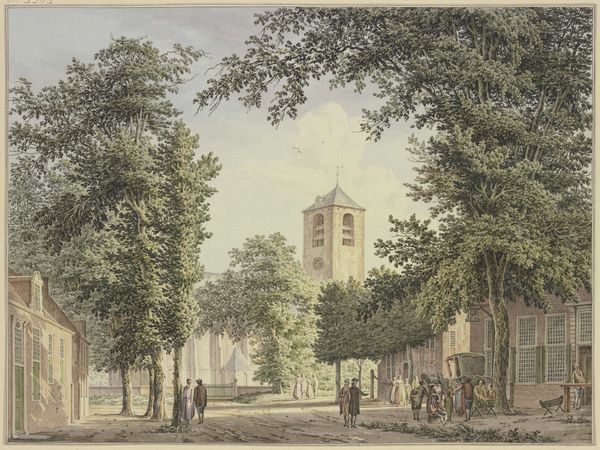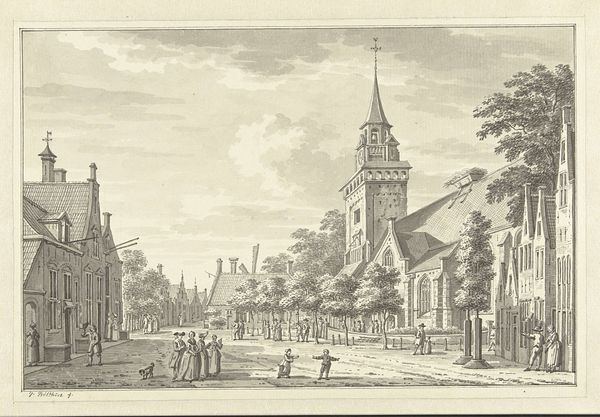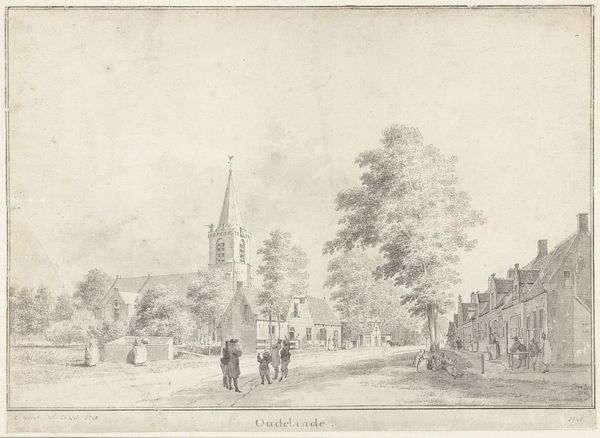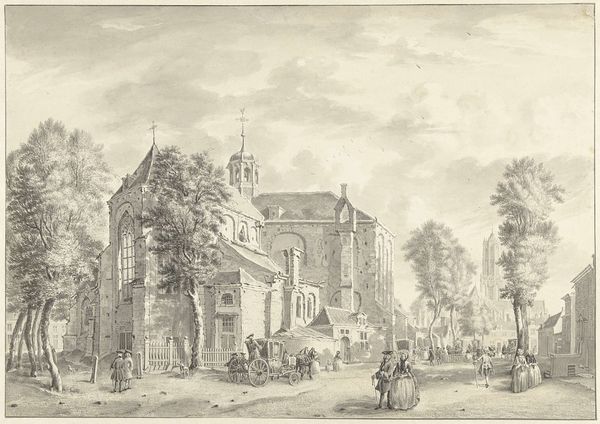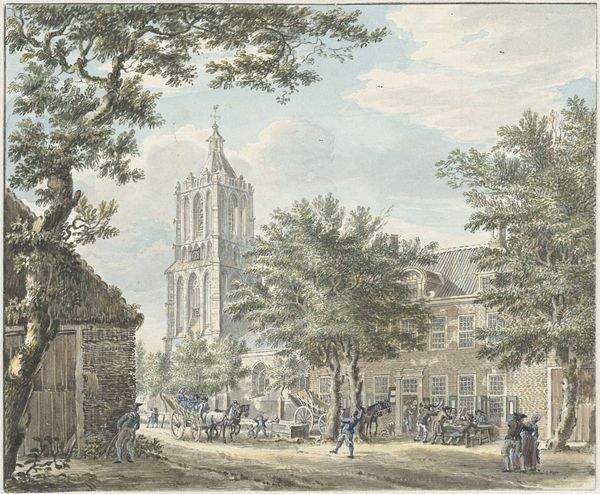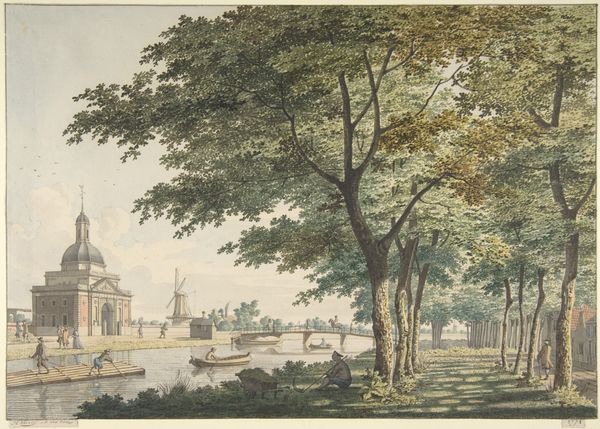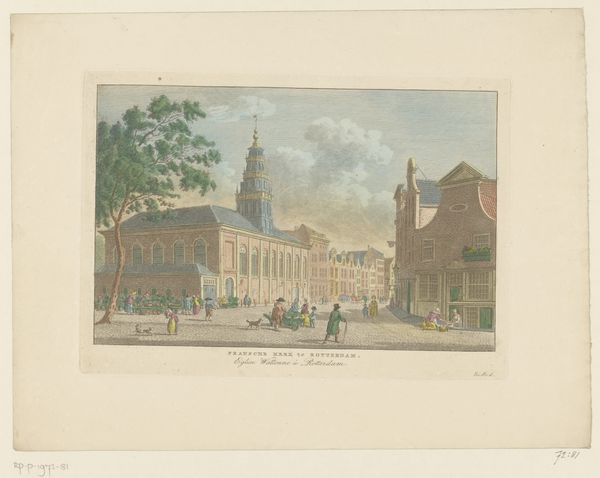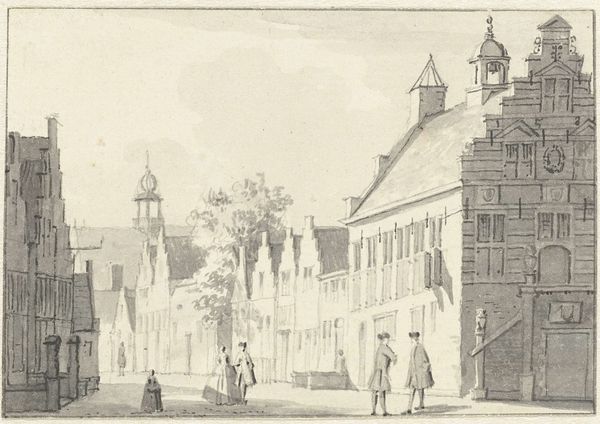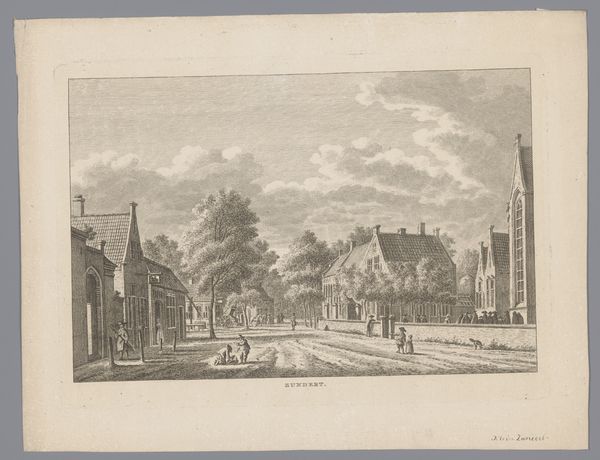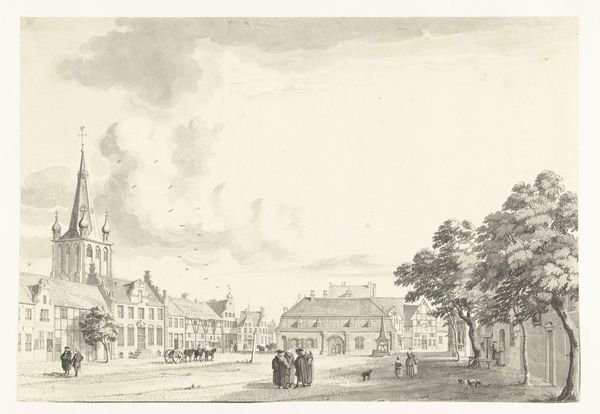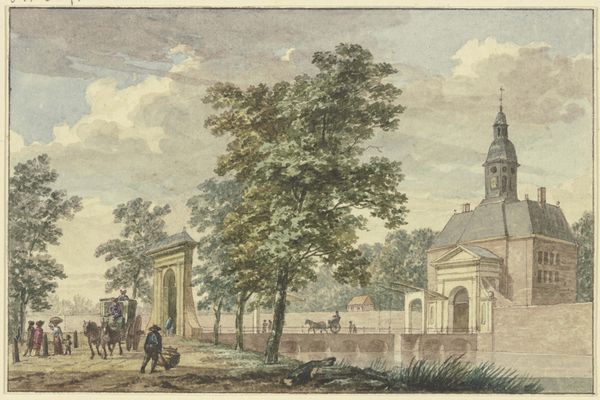
drawing, coloured-pencil, plein-air, watercolor, chalk
#
drawing
#
coloured-pencil
#
plein-air
#
landscape
#
watercolor
#
coloured pencil
#
romanticism
#
chalk
#
cityscape
#
watercolor
Copyright: Public Domain
Editor: This is "View of the Utrechtsepoort in Amsterdam" by Hermanus Petrus Schouten, made between 1790 and 1800, using watercolor, chalk and colored pencil. It has such a gentle, almost hazy atmosphere. How do you read this artwork? Curator: Considering the context of its making, let's observe the materials. Watercolor, chalk, and colored pencil – relatively accessible and transportable. This suggests a move towards artmaking becoming more integrated into everyday life, even leisure. Could this "plein-air" approach, as it's tagged, point to shifting artistic labor practices? Instead of solely studio work, artists venture out, engaging directly with the material world. Editor: That's a great point, and I hadn’t considered that. Does the subject matter – the city gate – tell us something about production or labor as well? Curator: Absolutely. City gates were points of control—regulating the flow of people, goods, and information. Schouten capturing it, perhaps subtly acknowledges these economic and social mechanisms. Think about what materials *entered* through this gate – where were they sourced? Who labored to create them, to transport them? This idyllic scene hints at the complexities of urban life and trade. It masks labor with serenity, inviting us to contemplate consumption, perhaps. Editor: So, this beautiful landscape might also be about economics and social power! That changes my view quite a bit. I will definitely look for a balance of romanticism and hard facts of 18th century's commerce! Curator: Exactly. By understanding the materiality and means of representation, we get a richer understanding of not just the *what*, but the *how* and the *why* behind its creation.
Comments
No comments
Be the first to comment and join the conversation on the ultimate creative platform.
